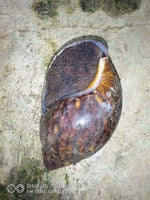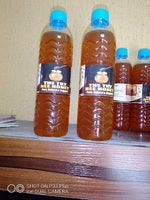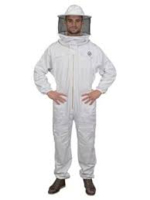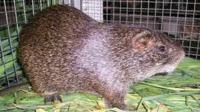Post by Ismail AbdulAzeez on Jun 17, 2017 21:16:34 GMT 1
Requirement For Iron:
Piglets are born with a limited supply of iron, which is rapidly depleted as they grow. Milk contains a negligible amount of iron and it is necessary to supply piglets with an additional source to prevent anaemia. The known methods of giving iron piglets are as follows:
*By injecting iron solution into the blood system.
*Oral dosage with iron tablets.
*Rubbing the sow's udder with iron solution {ferrous salt}.
*Providing sterile clean soil in the pen
Castration:
It is necessary to castrate male piglets not required for future breeding. Recent investigation in pig breeding have proved that the growth of boars to market weight is generally more efficient and rapid than that of castrated males or gilts.
In future, therefore, the marketing of young boars for pork may become an acceptable practice. For ease of handling and reduced stress, castration should be done at least 2 weeks before weaning. An acceptable time is when the piglets are 2 to 6 weeks old.
The sow's milk is an ideal food for piglets. It is important to ensure that the sow produces enough milk for its litter.
After the third week of lactation, the quantity of milk produced by the sow normally tends to be insufficient to meet the requirements for maximum growth. The extra nourishment should be supplied by supplementary feeds.
Palatable and easily digested ration is therefore usually provided for the piglets in an area inaccessible to the sow, this is referred to as creep feeding. Creep ration contains antibiotics or drug which provides disease protection. Adequate water and feed should be provided to the sow and piglets until the piglets are weaned.
Weight at weaning:
Piglets that are heavier at birth will usually be more Vigorous and tend to be more the heaviest of the litter at weaning. The decision on when to wean should take into account weight rather than age of the young pigs as the litter size and milk production of each sow varies.
Under farm conditions, pigs should weigh at least 10kg before weaned because small pigs are more susceptible to disease after weaning. The major problem often observed soon after weaning is a rise in the incidence of scours {post weaning diarrhea} in young pigs.
In severe cases, death will result and several or all pigs in the litter, may be lost. Loss of body water {dehydration} is an important factor contributing to death at this time; so, clean water and feed must be available immediately before and after weaning.
Weaning Procedure:
To reduce stress on the litter at weaning, the sow should be moved to another pen while the weaners remain at their pen. Moving the litter or mixing with other pigs should be avoided for several days following weaning.
Age At Weaning:
The age at which piglets are weaned depends on several factors. It is very common to wean atv8 weeks. Early weaning is often practiced to increase the number of litter produced annually as it allows for earlier rebreeding. Short lactation also reduce the piglets demand on the sow and the amount of sow feed consumed is reduced.
Disadvantages however include the provision of higher cost of starter rations’ and the higher level of management necessary to reduce post-weaning mortality
Piglets are born with a limited supply of iron, which is rapidly depleted as they grow. Milk contains a negligible amount of iron and it is necessary to supply piglets with an additional source to prevent anaemia. The known methods of giving iron piglets are as follows:
*By injecting iron solution into the blood system.
*Oral dosage with iron tablets.
*Rubbing the sow's udder with iron solution {ferrous salt}.
*Providing sterile clean soil in the pen
Castration:
It is necessary to castrate male piglets not required for future breeding. Recent investigation in pig breeding have proved that the growth of boars to market weight is generally more efficient and rapid than that of castrated males or gilts.
In future, therefore, the marketing of young boars for pork may become an acceptable practice. For ease of handling and reduced stress, castration should be done at least 2 weeks before weaning. An acceptable time is when the piglets are 2 to 6 weeks old.
The sow's milk is an ideal food for piglets. It is important to ensure that the sow produces enough milk for its litter.
After the third week of lactation, the quantity of milk produced by the sow normally tends to be insufficient to meet the requirements for maximum growth. The extra nourishment should be supplied by supplementary feeds.
Palatable and easily digested ration is therefore usually provided for the piglets in an area inaccessible to the sow, this is referred to as creep feeding. Creep ration contains antibiotics or drug which provides disease protection. Adequate water and feed should be provided to the sow and piglets until the piglets are weaned.
Weight at weaning:
Piglets that are heavier at birth will usually be more Vigorous and tend to be more the heaviest of the litter at weaning. The decision on when to wean should take into account weight rather than age of the young pigs as the litter size and milk production of each sow varies.
Under farm conditions, pigs should weigh at least 10kg before weaned because small pigs are more susceptible to disease after weaning. The major problem often observed soon after weaning is a rise in the incidence of scours {post weaning diarrhea} in young pigs.
In severe cases, death will result and several or all pigs in the litter, may be lost. Loss of body water {dehydration} is an important factor contributing to death at this time; so, clean water and feed must be available immediately before and after weaning.
Weaning Procedure:
To reduce stress on the litter at weaning, the sow should be moved to another pen while the weaners remain at their pen. Moving the litter or mixing with other pigs should be avoided for several days following weaning.
Age At Weaning:
The age at which piglets are weaned depends on several factors. It is very common to wean atv8 weeks. Early weaning is often practiced to increase the number of litter produced annually as it allows for earlier rebreeding. Short lactation also reduce the piglets demand on the sow and the amount of sow feed consumed is reduced.
Disadvantages however include the provision of higher cost of starter rations’ and the higher level of management necessary to reduce post-weaning mortality












